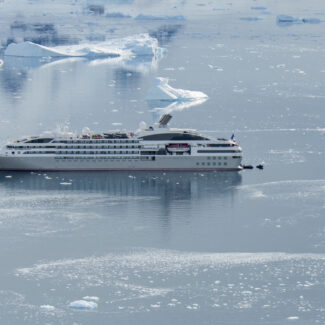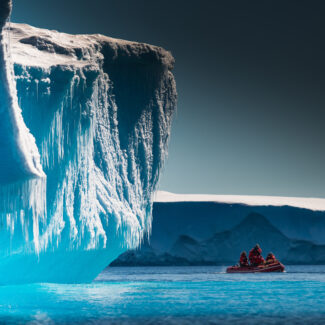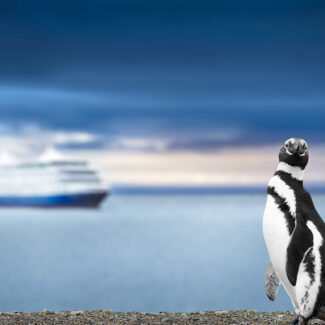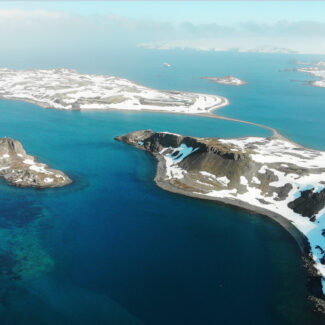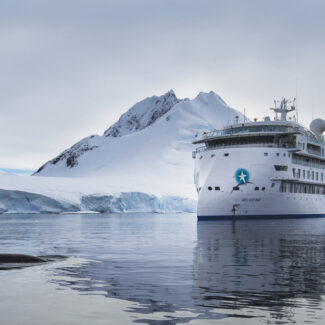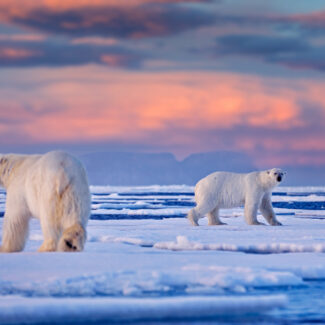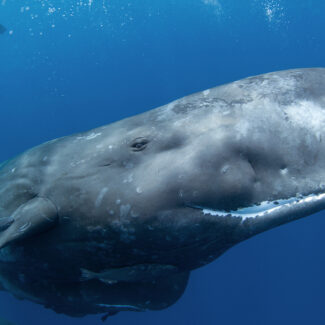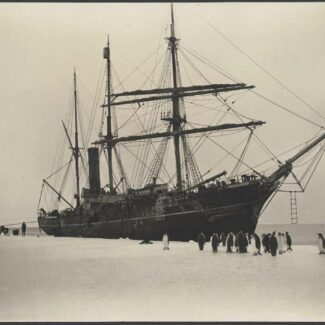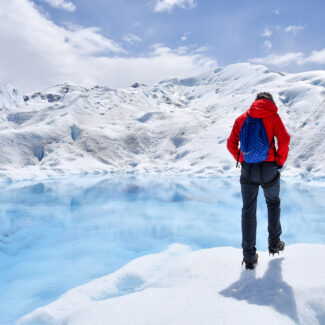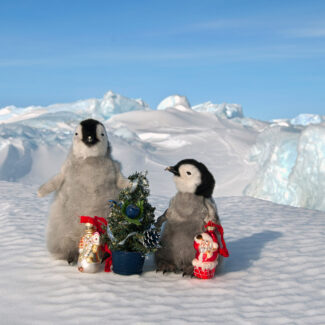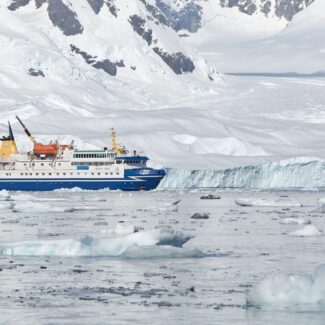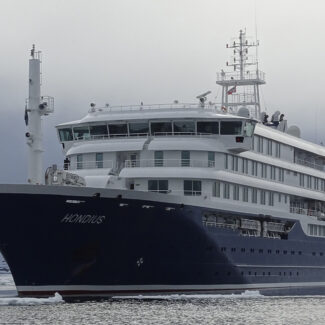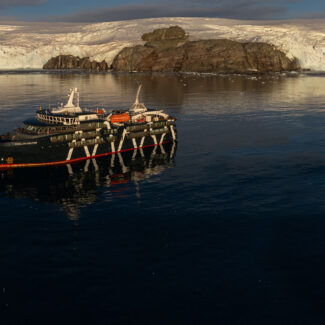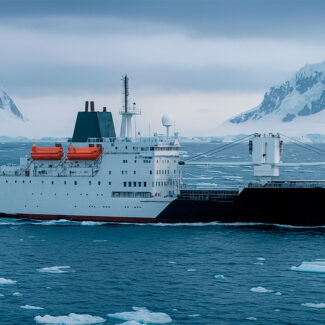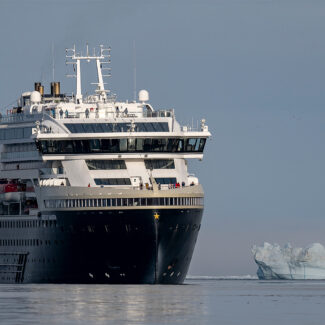A Guide To Arctic Plants: Surviving & Thriving In The Tundra
- The Broad-strokes Vegetation Spectrum in the Arctic
- The Arctic Timberline—World’s Largest Ecotone?—and the World’s Northernmost Trees
- The 22 Floristic Provinces in the Arctic
- Arctic Vegetation Communities
- Plant Diversity in the Arctic
- Arctic Plant Adaptations
- Experiencing the Arctic Bloom on an Expedition Cruise
If your image of the Arctic is a land dominated by barren snow, ice, and rock, you might be surprised at the impressive extent of plantlife up here. Of the roughly 2.7 million square miles (7.11 million square kilometers) of land surface in the Arctic, about 1.9 million square miles (5.11 million square kilometers) are reckoned to be vegetated.
The Arctic tundra, a land of extremes, harbors surprisingly vibrant plant life. Discover the fascinating ways these hardy species survive and thrive in this harsh environment.
And while the Arctic climate imposes some real challenges and limitations for plants, these organisms go into super-drive during the brief but sun-bathed Far North summer, making for an incredible and inspiring spectacle—and no shortage of lovely little top-of-the-world blooms.
What plants live in the Arctic? How do plants survive in the Arctic? Let’s take a look at one of the more under-appreciated aspects of the Arctic ecosystem!
The Broad-strokes Vegetation Spectrum in the Arctic
Before we dive into the nitty-gritty of Arctic plant diversity and adaptations, it’s nice to present the bigger picture of this region’s vegetation layout and major plant zones: essentially the eco-geographic context within which individual plant species flourish up here.
The Arctic Timberline—World’s Largest Ecotone?—and the World’s Northernmost Trees
The ecological frontier marking where the boreal forest, or taiga, gives way to Arctic tundra to the north creates what scientists call an ecotone: a biome or ecosystem transition zone. This Arctic timberline, where forest cover yields to wide-open barrens, is perhaps the biggest ecotone on the planet (as the late research forester Stephen Arno noted in his book, Timberline: Mountain & Arctic Forest Frontiers), and in parts of North America and Eurasia it may span 100 miles or more between the “forest line”—the northern edge of the closed taiga—and the mostly treeless tundra.
The Arctic timberline wraps around the tundra-taiga borderland in circumpolar fashion, though it’s not a straight west-east line; it plunges southward, for example, along the Siberian and Alaskan coasts of the Bering Sea due to the cold oceanic influence. Forest cover extends along the Mackenzie River in northwestern Canada to its delta along the Beaufort Sea, bringing a lobe of the North American Arctic timberline right up to the Arctic Ocean and creating the northernmost true forest on the continent. The northernmost forest outpost on the planet, meanwhile, is thought to be the Lukusky Grove of Dahurian larch on Siberia’s Taimyr Peninsula. Greenland, in turn, lacks an Arctic timberline, on account this biggest island on the planet is almost completely devoid of natural forest.
The southern portion of the Arctic timberline is often formed by what’s been called a lichen woodland, with spaced-out boreal trees above a lichen-heavy groundcover. The northern portion is the forest-tundra zone, with scattered and (as one proceeds north) often increasingly scraggly and stunted trees amid dwarf-shrub tundra.
The trees composing the Arctic timberline are generally spruces, larches, birches, and poplars—far northern vanguards of the boreal forest—even though the specific species vary across this vast ecotone’s spread from Eurasia to North America. Among the shrubs commonly found within the timberline zone are crowberry, cloudberry, and bog blueberry.
Now, this is not to say that you won’t find trees north of the main Arctic timberline. “Stringers” of taiga trees follow Arctic rivers beyond timberline in many mainland areas, able to survive in these corridors because the higher water table and subsurface flow limits permafrost, that frozen soil layer impeding tree growth on the surrounding tundra. And the aforementioned Dahurian larch of the Siberian Arctic, considered Earth’s most cold-hardy and northernmost-growing tree, toughs it out as lonely groves and solitary dwarfed individuals on the Taimyr Peninsula tundra, reaching about 72.5 degrees North latitude.
Even in the vast, open landscapes near the Arctic timberline, a world of life exists beneath your feet. Examine the ground closely to discover the unique textures of the tundra vegetation.
The 22 Floristic Provinces in the Arctic
One way biogeographers divide the planet is by floristic provinces, which are distinct areas of similar plant communities. The Arctic encompasses some 22 floristic provinces, with significant variation in plant diversity across them:
- Kanin-Pechora
- Polar Ural-Novaya Zemlya
- Yamal-Gydan
- Taimyr
- Anabar-Olenyek
- Kharaulakh
- Yana-Kolyma
- Wrangel Island
- W. Chukotka
- E. Chukotka
- Beringian Alaska
- N. Beringian Islands
- N. Alaska
- Central Canada
- W. Hudsonian
- Ellesmere-N. Greenland
- Baffin-Labrador
- W. Greenland
- E. Greenland
- N. Iceland-Jan Mayen
- N. Fennoscandia
- Svalbard-Franz Josef Land
Even in the most extreme Arctic floristic provinces, like this area in Greenland, small, hardy plants surprise you with bursts of color and life against a backdrop of ice and rock.
Arctic Vegetation Communities
The major vegetation types or biomes in the Arctic proper are, from a simplified standpoint, tundra and polar desert/semidesert. (Though we should note that some biogeographers refer to polar desert as its own subtype of tundra.) But multiple different plant communities compose those general biomes, from dwarf-shrub heath and moist tussock tundra to polar-desert herb barrens.
Moist tussock tundra is characterized by its spongy ground and soft white cotton-grass, a distinctive plant community that covers vast stretches of the Arctic landscape.
Plant Diversity in the Arctic
The Arctic supports roughly 2,200 species of vascular plants—that is, plants with special internal tissues for transporting water and nutrients, which include trees, shrubs, grasses, forbs, herbs, and ferns, among other familiar kinds—and about 900 species of bryophytes, more primitive (but still wildly successful) plants comprising mosses and liverworts. It’s rare to find an Arctic plant community lacking bryophytes.
The severe subpolar to polar climate, recent geologic history that involved extensive glaciation in many areas, and the natural barriers presented by waterways and high mountains all translate to only modest plant diversity in the Arctic. Those 2,200 species of vascular plants, for example, represent less than 1 percent of Earth’s total. But they include more than 100 species and subspecies found nowhere else, aka endemic species.
Flowering plants (angiosperms) dominate, by far, the vascular-plant diversity of the Arctic. Some particularly widely distributed and species-rich Arctic plant families include the grasses, sedges, roses, buttercups, composites, and legumes, with the willow genus—mainly represented in the Arctic by various dwarf willow species—also well-represented.
Because of complex climatic, geologic, and geographic reasons, certain floristic provinces and subregions in the Arctic are more plant-diverse than others. Wrangel Island in the Russian Arctic is a real biodiversity hotspot, partly because—unlike many other corners of the High Arctic—it wasn’t heavily glaciated during the most recent Pleistocene ice ages, and so plants (and other lifeforms) have had a comparatively long evolutionary runway to diversify. It boasts more than 400 species and subspecies of vascular plants, notably more than other High Arctic tundra regions of comparable extent.
The archipelago of Svalbard also boasts an impressive plant list for its size, with about 165 vascular plants native to the islands. Some of them, such as chestnut rush and slim-stem small reed grass, are quite geographically restricted and less cold-tolerant, suggesting they probably colonized Svalbard during warmer climatic phases thousands of years ago and are now a bit “out of sync” with current Arctic conditions.
Don’t let the harsh environment fool you; the Arctic holds a surprising diversity of flora. These simple, beautiful flowers are a testament to the resilience of life in the far north.
Arctic Plant Adaptations
It’s not just the intense cold of the Arctic that plants must contend with: It’s also the prolonged darkness of winter, the severe winds of treeless tundra and polar-desert expanses, and, across much of the region, not a whole lot of moisture to tap into. The permanently frozen soil layers of the permafrost zone limit root penetration and can also produce poorly drained, boggy conditions; freeze-thaw cycles in the soil produce “stone circles” and other micro-landforms that also influence plant habitat.
The growing season in the Arctic is a short one, given how long winter conditions of darkness and snow/icecover prevail up here. On the other side of the coin, the extended daylight of the Arctic summer—the time of the Midnight Sun—provides lots of fuel for photosynthesis. So Arctic vegetation packs in major seasonal growth and reproduction on an intense, comparatively short timetable. Many Arctic flowering plants actually retain their green leaves over the winter so that they can crank into action as soon as the snow melts off.
The stunted, contorted look of many of the northernmost trees along the far poleward limits of the Arctic timberline suggest the harsh effects of wind, drought, and cold. Arctic plants, as a rule, tend to be ground-hugging so that they’re less exposed to frigid temperatures and strong winds—and, to some extent, because the short growing season and meager soils don’t support larger vegetative growth. The farther north one goes, the more plants adopt cushion or trailing growth forms.
The relatively lean snowcover of the Arctic—lean because of low precipitation and the scouring effects of wind—actually provides an important thermal buffer for plants, shielding them in winter from harsh, drying winds and brutal cold. Wind-deposited snowdrifts in open tundra and polar desert also become moisture sources in the growing season after the main snowpack has melted away. Indeed, in the harshest and driest reaches of the polar-desert barrens, these snowfields often support the only major swaths of vegetative cover: so-called “snowflush plant communities,” nourished by summer meltwater.
Among the most cold-resilient species are purple saxifrage and Arctic poppy, which share the honor for the farthest-north-growing flowering plants, reaching 83°40′ N on North Greenland’s Kaffeklubben Island (where they share space with bryophytes, too). This is likely the northernmost significant landmass on the planet, so it’s all the more impressive that plants can still be found here—within “shouting distance,” if you will, of the sea-ice-swaddled North Pole.
The Arctic poppy is a master of survival, with cup-shaped petals that track the sun and focus heat on the flower’s center—a brilliant adaptation for life in the cold.
Experiencing the Arctic Bloom on an Expedition Cruise
From poppies and saxifrages to cinquefoils and Arctic white heather, summer visitors to the Arctic get to experience the landscape as its most luxuriant—a striking display of greenery and blossoming all the more stirring given the extreme, high-latitude setting. Considering how busy Arctic plants are during that fleeting summer window, cruisegoers on our various itineraries to places such as Svalbard, Iceland, Greenland, and the Canadian High Arctic have excellent opportunities to catch one or another pulses of the “Arctic bloom” in all of its splendor!
The fleeting Arctic bloom is a magnificent display of color. After a long winter, plants like the fireweed burst into life, creating a spectacular contrast against the rugged landscape.
Disclaimer
Our travel guides are for informational purposes only. While we aim to provide accurate and up-to-date information, Antarctica Cruises makes no representations as to the accuracy or completeness of any information in our guides or found by following any link on this site.
Antarctica Cruises cannot and will not accept responsibility for any omissions or inaccuracies, or for any consequences arising therefrom, including any losses, injuries, or damages resulting from the display or use of this information.


